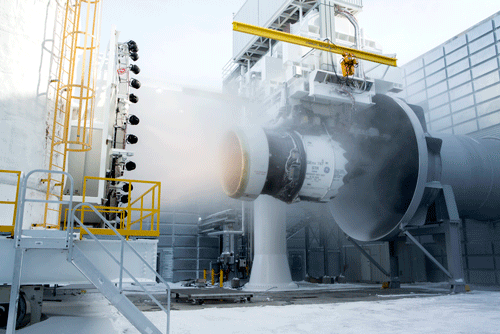GE opened the $50 million engine testing site in Winnipeg last February. Workers at the location are just finishing the first full season of winter testing. The newest GE jet engines, including engines from the GEnx family, had to endure the human equivalent of running a marathon in Siberia through clouds of freezing water, blinding wind and ice crystals. All this so you can relax on your next winter flight, and to earn an FAA certification.
Cold iron: This GEnx engine is powering through a test in minus 8 F weather, ingesting 2,800 lbs of wind, water, and ice per second.
How bad is the ordeal? Imagine seven fans, 250 horsepower each, blowing 2,800 pounds of cold air per second. Then mix the 60 mph gale with thousands of gallons of water spraying from 125 high-power nozzles. The engines most power through this mean icing cloud as cold as minus 8 F at idling and take-off speeds to meet regulatory standards.
The work at the Winnipeg testing site does not stop even as the frozen plains begin to thaw (a new $2.5 million upgrade means that the local team can now test the year-round). “We have the highest level of new engine development in the history of GE Aviation,” says Kanter, whose full job title is general manager for design and systems integration at GE Aviation.
Kanter says that “so far the facility has been fantastic. When you are dealing with temperatures this low, pipes can freeze and other things can go wrong. But we used a lot of foresight during the design, put a heated platform under the engine and heaters in the right locations. It paid off.”
Photographer Noah Kalina recently traveled to Winnipeg and brought back pictures from the testing ground. Just looking at them makes the temperature drop.
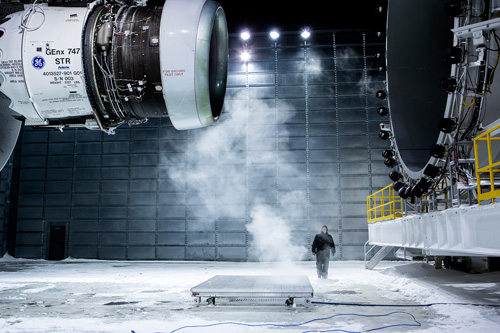 Steam is rising from a heated platform after a night of ice testing in subzero temperatures.
Steam is rising from a heated platform after a night of ice testing in subzero temperatures. 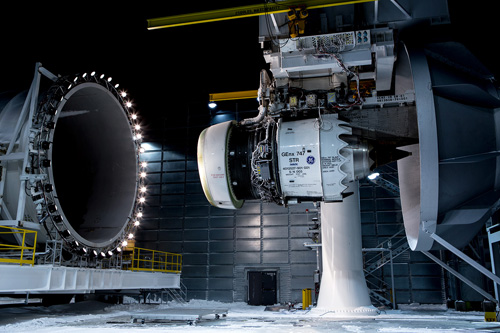 Lights ring the wind tunnel and illuminate the engine and the ice cloud. GE engineers use high-speed photography to determine, among other things, how ice builds up on fan blades and other engine parts.
Lights ring the wind tunnel and illuminate the engine and the ice cloud. GE engineers use high-speed photography to determine, among other things, how ice builds up on fan blades and other engine parts. 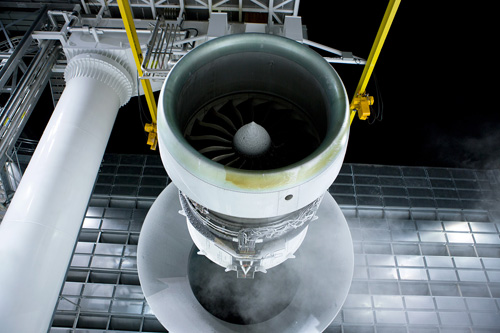 Steam is rising from a heated platform after a night of ice testing in subzero temperatures.
Steam is rising from a heated platform after a night of ice testing in subzero temperatures. 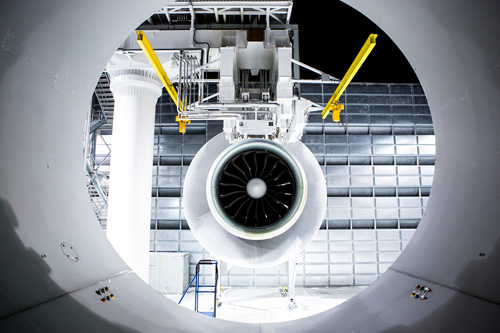 The GEnx jet engine after an ice test.
The GEnx jet engine after an ice test. 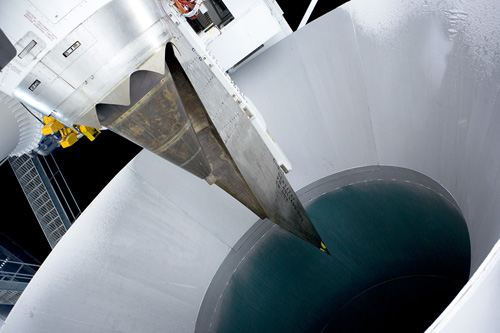 The engine and the wind tunnel.
The engine and the wind tunnel. 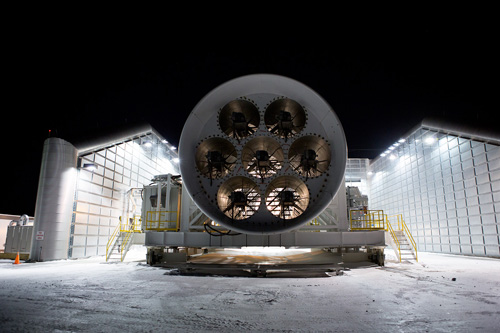 The seven high powered fans can blow wind at 60 mph into the wind tunnel.
The seven high powered fans can blow wind at 60 mph into the wind tunnel. 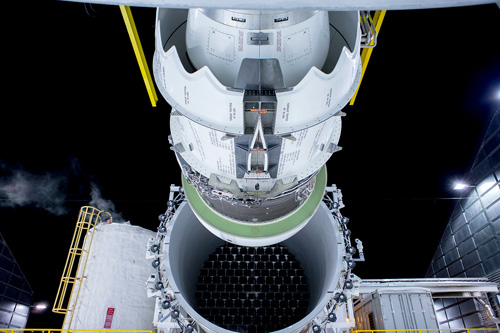 The engine and the wind tunnel.
The engine and the wind tunnel. 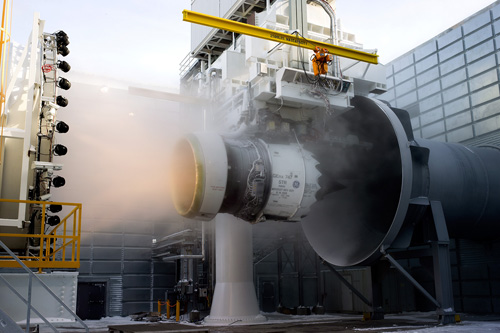 The GEnx engine is being blasted by an ice cloud.
The GEnx engine is being blasted by an ice cloud. 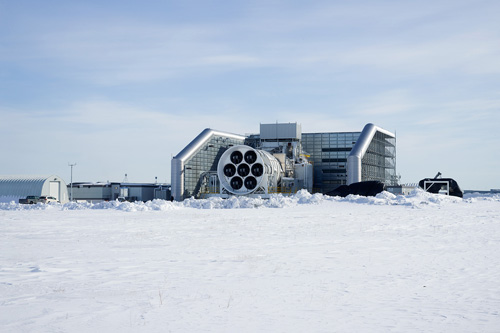 The Winnipeg ice testing facility.
The Winnipeg ice testing facility.
